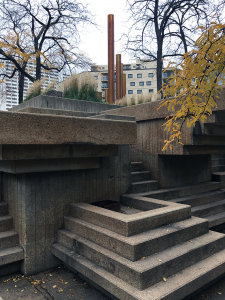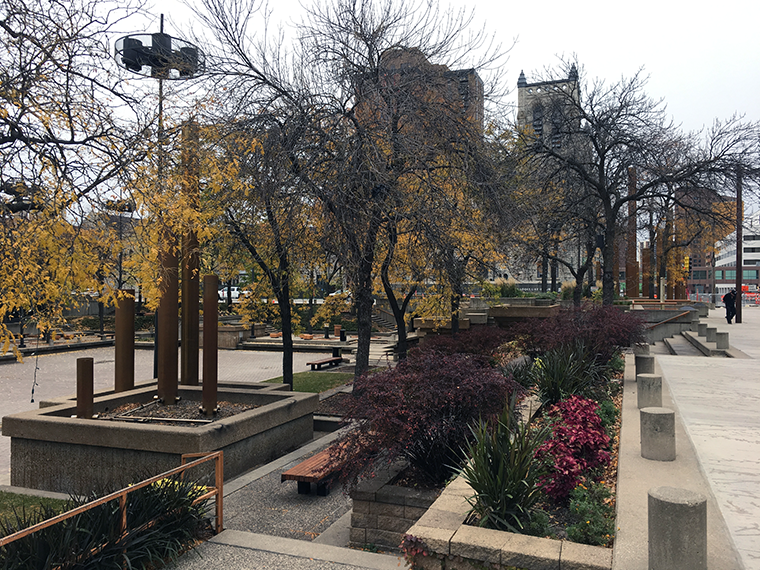This is the second of three posts sharing my response to the Advisory Council on Historic Preservation’s request for input on the National Historic Preservation Program. As I noted previously, the Goals, Strategies, and Ideas presented for comment are hardly ground-breaking, but I truly hope comments the Advisory Council receives will help them develop a national plan of action for preservation similar to what With Heritage So Rich provided to the historic preservation field in the 1960s.
In the end, my response to the Advisory Council presented three topics that I thought had been given short-shrift:
- A national plan of action must recognize historic preservation goes beyond the federal historic preservation program and incite action and change in all sectors, both public and private.
- In order to help safeguard all cultural heritage, the future of historic preservation must obviously spur new and innovative partnerships, but it must also recognize and strengthen all of the existing opportunities for partnerships with organizations across the globe.
- Assessment of federal programs and policies must reconsider the structure of the federal historic preservation program, implementing changes that can serve as a model for tribal, state, local, and private sectors.
My full explanation to the Advisory Council in relation to the second bullet is after the horizontal rule below and the others are posted here and here. But first a bit of context:
strategic partnerships can be a game-changer

“Partnership,” like “iterative,” has been one of those words that has continually permeated my personal and professional life over the last several years. So I was not surprised when the Advisory Council’s Goals, Strategies, and Ideas for improvements to the national historic preservation program included a number of references to building, supporting, or expanding partnerships. However, I was disappointed with the lack of inspiration suggested in what partnerships could achieve.
I truly believe that by building new strategic partnerships with entities that are interested in safeguarding and preserving cultural heritage of all types, we can address some of the most commonly discussed shortcomings of the national historic preservation program. For example, one way to address concerns about intangible heritage is to work with entities that are already doing this work outside the place-based historic preservation world. And one way to address concerns about diversity and inclusivity is to work with the communities, organizations, and individuals who are already working to document, preserve, and share their own stories and places.
Perhaps part of the problem is that before we can start to use partnerships to their full advantage for historic preservation (and the broader idea of heritage preservation encompassing all cultural and heritage resources), we need to figure out what partnership is. I’ve struggled with this myself, in part due to the clique-like nature of our field and the fact that most partnerships form in a opportunistic way around a single project or funding source. Perhaps we would be more successful with a better understanding of our current and future partners’ missions and responsibilities (and our own mission and responsibilities, for that matter). Once we acknowledge our differing perspectives, we can develop specific roles and mutual expectations for a true partnership that can live well beyond any one specific project.
In order to help safeguard all cultural heritage, the future of historic preservation must obviously spur new and innovative partnerships, but it must also recognize and strengthen all of the existing opportunities for partnerships with organizations across the globe.
Partnerships are mentioned in one strategy and approximately 15 ideas, illustrating they are an important avenue to meeting all three goals. However, critical partnerships are missing that might help address very strong concerns implied in numerous other ideas about the limited nature of our federal historic preservation program and, specifically recognition of historic significance through the National Register of Historic Places (e.g., I.C.3-8, II.C.4, II.D.6-7, II.E.3, III.A.5, III.B.3 & 8-9, and III.C.6-7).
The federal historic preservation program is, by design, place-based. We need to better address cultural heritage as a whole in all federal programs and policies without losing the existing effectiveness of individual programs. As part of this, we need to acknowledge that the idea of documenting and preserving cultural heritage is divvied up through numerous federal agencies, institutions, and programs, each in line with the individual entity’s federal mandate and professional expertise. For example, the Smithsonian Institution is included in an idea (Idea II.C.3), as well as partnerships with other federal entities such as the NEH, NEA, and IMLS (Idea II.D.4). However, the American Folklife Center (AFC) at the Library of Congress and National Heritage Area program (NHA) at the National Park Service are both strangely missing. The AFC is the federal government’s primary acknowledgment of intangible heritage outside the Smithsonian and NHAs are prime examples of economically driven private-public partnerships related to cultural heritage at a local level. Both entities must be part of the conversation about the future of preservation.
More obviously absent from the goals, strategies, and ideas about partnerships, however, is partnering with international organizations and entities. For example, UNESCO has led worldwide efforts to identify safeguards for intangible heritage. They, along with other international organizations concerned about cultural heritage, have also helped support new policy development to safeguard intangible cultural heritage.
Imagine a nationwide private-public effort (using the work of UNESCO, ICOMOS, and others as a model and partnering with all federal entities involved in documenting and preserving our heritage) to 1) document how all types of cultural heritage are currently addressed in all federal programs and policies, 2) identify gaps and inappropriately assigned federal mandates and programs, and 3) recommend changes for immediate action. This assessment should include looking at the current structure of the federal historic preservation program (see next post).
Successful changes at the federal level could serve as a model for changes at state and local levels and as a foundation for guidance to private, local, state, and tribal preservation interests. A thorough assessment of this sort might stem the desire to expand any individual preservation program beyond its means or expertise (e.g., attempting to treat tangible and intangible heritage with inappropriate tools). It would also help us better understand the roles, responsibilities, and opportunities afforded by individual programs working better together.

